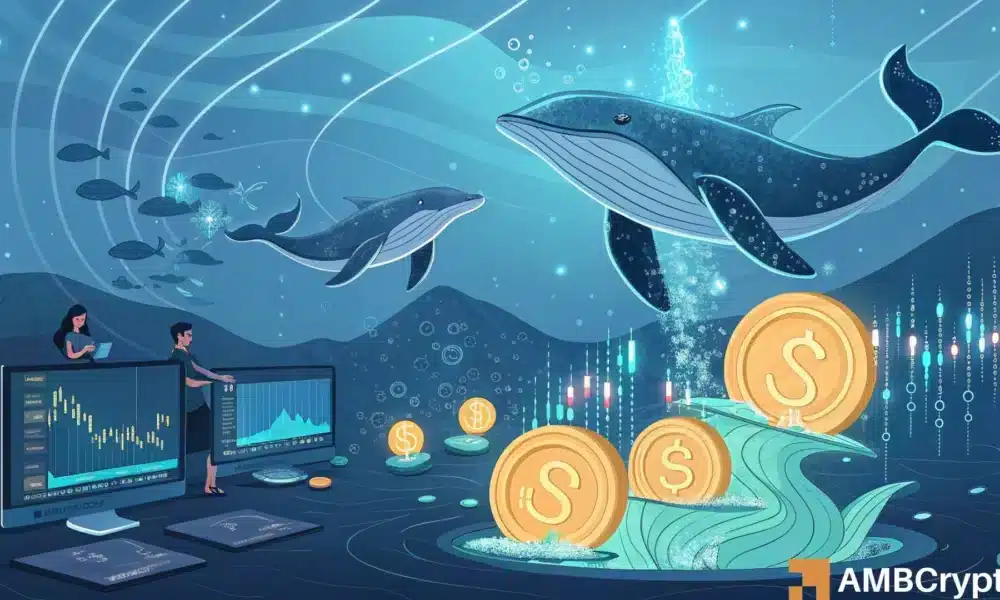Solana’s Market Dynamics: Whale Activity, Retail Accumulation, and Future Prospects
In recent developments within the cryptocurrency market, Solana (SOL) has exhibited significant volatility, exemplified by a major whale transaction involving the sale of 240,000 SOL tokens valued at approximately $35 million. This move raises important questions about the broader sentiment surrounding Solana, particularly in light of current market conditions that have seen retail investors shifting toward accumulation amid negative net flow values.
Whale Movements and Market Sentiment
Just nine days ago, a notable whale wallet unstaked 1 million SOL, which was worth around $139 million. Following this, the recent sale of 240,000 SOL indicates a hesitant stance among crypto’s large players. According to blockchain analysis platform Lookonchain, such aggressive selling behavior often denotes declining market confidence among whales. This apprehension is echoed by Solana’s struggle to maintain its price levels; after an attempt to break past the $154 resistance, the price retraced to a low of $149. Such movements reflect significant downward pressure on the altcoin, prompting speculation about the willingness of whales to hold their positions.
Disappearing Whale Orders
The absence of large whale orders in Solana’s market has further fueled concerns regarding the confidence of institutional investors. An analysis of Solana’s Spot Average Order Size suggests that whales have largely exited the market, indicating a bearish outlook among these influential market players. As larger entities step back, this adds to a broader sense of unease regarding Solana’s price trajectory.
Retail Investors on the Offensive
Despite the selling pressure from whales, retail investors seem to be capitalizing on the situation, opting for the accumulation of SOL tokens. Recent data from CoinGlass shows that Solana’s Netflow has turned negative, measuring at -$19.69 million. This drawback in net flow is typically a bullish indicator, denoting accumulation and reduced selling pressure. Historical patterns reveal that such behavior often precedes price recovery phases, especially during market corrections.
Futures Market Activity
Moreover, another interesting trend is emerging in Solana’s futures markets. Following a four-day decline, the Perpetual Futures Volume has surged back to $484 million. This increase signals renewed speculative interest, with traders opening leveraged long or short positions. A spike in futures volume generally indicates heightened market engagement, which aligns with the retail investors’ accumulation strategy. As traders navigate the turbulence, their activity could play a pivotal role in influencing Solana’s price movements in the short term.
What Lies Ahead for Solana?
While the divergence between whale selling and retail accumulation raises potential concerns, there is currently no strong evidence indicating widespread institutional panic. According to AMBCrypto, the selling observed is more likely a result of profit-taking or portfolio rebalancing rather than mass liquidation. Many whales appear to be employing a cautious, wait-and-see approach. This suggests that recent price retracements are likely healthy market corrections, not panic-induced sell-offs.
If retail investors continue their trend of accumulation, Solana could possibly reclaim the $154 threshold and set its sights on $159. Conversely, should retail sentiment falter and traders begin to sell their positions, SOL may fall below crucial support levels at $149, potentially leading to further declines toward the $140 mark.
Conclusion
In summary, the current market dynamics surrounding Solana present a complex yet fascinating narrative. With significant whale activity signaling cautiousness, and retail investors actively accumulating, the future of Solana hangs in a delicate balance. Understanding these evolving trends is crucial for investors aiming to navigate the unpredictable waters of cryptocurrency trading. As market conditions continue to fluctuate, both retail and institutional participants will need to carefully assess their strategies, keeping an eye on key price levels and market signals for potential shifts ahead.


